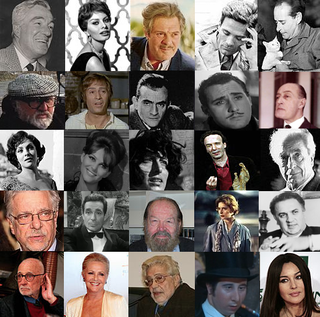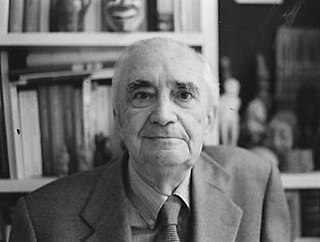External links
- "Official website" (in Italian).
- "Cineteca Italiana" (in Italian).
Cineteca Italiana is a private film archive located in Milan, Italy, established in 1947, and as a foundation in 1996.
Established in 1947, and as a foundation in 1996, the Cineteca Italiana houses over 20,000 films and more than 100,000 photographs from the history of Italian and international cinema. [1]
Particularly important is the nitrate film section; the International Federation of Film Archives (FIAF) has defined the Cineteca Italiana as one of the most important silent film archives in Europe. [2] The Cineteca is active in the restoration of films, which are presented in the main international cinema events and in the screening rooms of the Cineteca.
The Cineteca manages the museum, opened in 1985 at Dugnani Palace, dedicated to the cinema of the origins, transferred and enlarged in 2012 together with the Cineteca offices in the former Tobacco Factory in viale Fulvio Testi 121 [3] in collaboration with the Lombardy Region. In the same building there are the Civic School of Cinema "Luchino Visconti" and the Lombard branch of the Centro Sperimentale di Cinematografia.
Among the other assets of the Cineteca is a large collection of original screenplays and a corpus of 15,000 silent and sound cinema posters. Since 1997, the Cineteca has curated an editorial series dedicated to the history of cinema, the Quaderni Fondazione Cineteca Italiana. [4]

The cinema of Italy comprises the films made within Italy or by Italian directors. Since its beginning, Italian cinema has influenced film movements worldwide. Italy is one of the birthplaces of art cinema and the stylistic aspect of film has been the most important factor in the history of Italian film. As of 2018, Italian films have won 14 Academy Awards for Best Foreign Language Film as well as 12 Palmes d'Or, one Academy Award for Best Picture and many Golden Lions and Golden Bears.

Milan is a city in northern Italy, capital of Lombardy, and the second-most populous city proper in Italy after Rome. The city proper has a population of about 1.4 million, while its metropolitan city has 3.26 million inhabitants. Its continuously built-up urban area is the fourth largest in the EU with 5.27 million inhabitants. According to national sources, the population within the wider Milan metropolitan area, is estimated between 8.2 million and 12.5 million making it by far the largest metropolitan area in Italy and one of the largest in the EU.

Lombardy is an administrative region of Italy that covers 23,844 km2 (9,206 sq mi); it is located in the northern-central part of the country and has a population of about 10 million people, constituting more than one-sixth of Italy's population. Over a fifth of the Italian gross domestic product (GDP) is produced in the region.

Italians are an ethnic group native to the Italian geographical region. Italians share a common culture, history, ancestry and language. Their predecessors differ regionally, but generally include native populations such as the Etruscans, the Rhaetians, the Ligurians, the Adriatic Veneti, and the Italic peoples, including the Latins, from which the Romans emerged and helped create and evolve the modern Italian identity. Foreign influences include the ancient Greeks in Magna Graecia, and the Phoenicians, who had a presence in Sicily and Sardinia, the Celts, who settled in parts of the north, the Germanics and the Slavs. Legally, Italian nationals are citizens of Italy, regardless of ancestry or nation of residence and may be distinguished from ethnic Italians in general or from people of Italian descent without Italian citizenship and ethnic Italians living in territories adjacent to the Italian peninsula without Italian citizenship. The Latin equivalent of the term Italian had been in use for natives of the geographical region since antiquity.

Domenico "Mimmo" Rotella was an Italian artist considered an important figure in post-war European art. Best known for his works of décollage and psychogeographics, made from torn advertising posters. He was associated to the Ultra-Lettrists an offshoot of Lettrism and later was a member of the Nouveau Réalisme, founded in 1960 by the art critic Pierre Restany.

Achille Castiglioni was an Italian architect and designer of furniture, lighting, radiograms and other objects. As a professor of design, he advised his students "If you are not curious, forget it. If you are not interested in others, what they do and how they act, then being a designer is not the right job for you."
Intesa Sanpaolo S.p.A. is an Italian international banking group. It is Italy's largest bank by total assets and the world's 27th largest. It was formed through the merger of Banca Intesa and Sanpaolo IMI in 2007, but has a corporate identity stretching back to its first foundation as Istituto Bancario San Paolo di Torino in 1583.

Virgilio Tosi was an Italian documentary filmmaker and historian of early film.

A cinematheque is an archive of films and film-related objects with an exhibition venue. Similarly to a book library, a cinematheque is responsible for preserving and making available to the public film heritage. Typically, a cinematheque has at least one motion picture theatre, which offers screenings of its collections and other international films.

Giuseppa Iolanda Menichelli, known professionally as Pina Menichelli, was an Italian actress. After a career in theatre and a series of small film roles, Menichelli was launched as a film star when Giovanni Pastrone gave her the lead role in The Fire (1916). Over the next nine years, Menichelli made a series of films, often trading on her image as a diva and on her passionate, decadent eroticism. Menichelli became a global star, and one of the most appreciated actresses in Italian cinema, before her retirement in 1924, aged 34.

The Cineteca di Bologna is a film archive in Bologna, Italy. It was founded on 18 May 1962.

Outcast is a 1928 silent film drama produced and distributed by First National Pictures. It was directed by William A. Seiter and stars Corinne Griffith, often considered one of the most beautiful women in film. This story had been filmed in 1917 as The World and the Woman with Jeanne Eagels. In 1922 a Paramount film of the same name with Elsie Ferguson reprising her stage role was released. Both films were based on a 1914 play, Outcast, by Hubert Henry Davies which starred Ferguson. The Seiter/Griffith film was an all silent with Vitaphone music and sound effects. In the sound era the story was filmed once again as The Girl from 10th Avenue starring Bette Davis. According to the Library of Congress database shows a print surviving complete at Cineteca Italiana in Milan.
The following is a timeline of the history of the city of Milan, Italy.
The Association of European Cinematheques is an affiliation of 49 European national and regional film archives founded in 1991. Its role is to safeguard the European film heritage and make these rich audiovisual records collected and preserved by the various film archives accessible to the public. ACE is a regional branch of FIAF Fédération Internationale des Archives du Film / International Federation of Film Archives. ACE members are non-profit institutions committed to the FIAF Code of Ethics.

Fondazione Prada, co-chaired by Miuccia Prada and Patrizio Bertelli since 1995, is an institution dedicated to contemporary art and culture. From 1993 to 2010, the Fondazione has organised 24 solo shows at its exhibition spaces in Milan, conceived as dialogues with acclaimed contemporary artists. In 2015, the Fondazione Prada opened a new, permanent facility in Milan.
The following is a timeline of the history of the city of Bologna, Emilia-Romagna region, Italy.
Events from the year 1908 in Italy.

The Adventures of Pinocchio is a 1911 Italian live-action silent film directed by Giulio Antamoro and starring Ferdinand Guillaume.

AmadeoLab is an Italian research institute based in Milan, Italy. The lab is a public hospital, currently representing the headquarters of the IRCCS National Cancer Institute (INT). and of the Neurological Institute "Carlo Besta". The building is made up of seven floors which contain all the medical, administrative and research departments. The Institute performs tests to prevent and diagnose potential oncological illnesses, and provides appropriate medical care and assistance for their treatment.
Cineteca Nazionale is a film archive located in Rome, Italy. It was founded in 1949. By law it manages the so-called legal deposit, with the task of collecting, preserving and disseminating the productions of Italian cinema. It is the only Italian film library that enjoys the right of mandatory legal deposit of all films produced and co-produced in Italy and registered in the Public Film Register held by the SIAE.